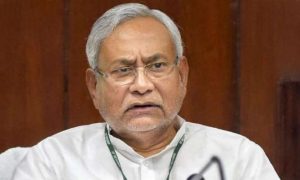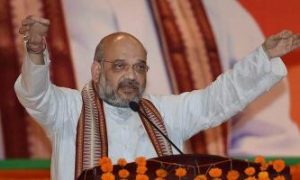Editor’s note: This article is the first of a two-part series analysing the agrarian crisis in India, in light of the various marches and protests undertaken by farmers in recent months to highlight their problems.
There are waves and waves of marches by farmers, landless and tribals in many parts of India these days, particularly to the seats of power like Mumbai and New Delhi. There have been at least four such marches in the past couple of months and another one is being organised in the National Capital on 29-30 November, seeking a special session of Parliament to discuss agrarian distress. These marches are timed to elections or Assembly/Parliament sessions in their desperate bid to be heard and their concerns addressed with long-term policies, plans and strategies, not sops, half-hearted measures or political skulduggery.
Such is the irony that it seems as if the policymakers, economists and opinion makers are oblivious of the fact that agriculture provides maximum employment – 49 percent – and supports nearly 70 percent of India’s population and yet accounts for just 16 percent of the national income (or GDP). This reflects how nearly half of India’s workforce and more than two-thirds of its population live on disproportionately lower income and in the margins. These are not random numbers quoted here: agriculture’s contributions to employment and income have been taken from this year’s Economic Survey (2017-18), while the population dependency is from the draft National Land Reform Policy of 2013, which was never taken up for discussion or passage.
Take a look at the magnitude of the challenges facing the most critical sector of India’s economy.
In 1971-72, there were 77.53 percent rural households comprised of landless, small and marginal farmers with less than two hectares of land, which went up to 92.82 percent in 2013 – according to the last NDA survey released in 2015. Similarly, households with more than two hectares of land shrunk from 21.89 percent in 1971-72 to 7.81 percent in 2013; the average landholding progressively went down from 1.53 hectares in 1971-72 to 1.01 hectares in 1992, from which was halved to 0.59 hectares in 2013. Such marginalisation of farmers’ landholding is one of the major causes of making farming unviable.
Moreover, for the first time since 1951, agriculture is now dominated by farm labourers, not cultivators. According to the Agriculture Statistics of 2017, farm labourers outnumbered farmers in 2011 – 144.3 million (54.9 percent of total agriculture worker) of them, against 118.8 million (45.1 percent) of cultivators. While the number of cultivators fell by 8.5 million in the decade between 2001 and 2011, 37.5 million more people took to farm labour during the same period. No wonder agriculture, which accounted for 51.8 percent of national income (GDP) in 1951, declined to 13.94 percent in 2013-14 – according to RBI data (with base year of 2004-5, at factor cost and constant price). The new series of GDP/GVA data with the base year of 2011-12 is kept out of this narrative as the back series of data have not yet been officially released.
We are skipping here the details of falling income level of farmers as these are now well-known.
It is all very well to say that agriculture is no longer lucrative or sustainable and hence more people should move out of it. But where will such a large population go and what will they do? The jobless growth accompanying higher GDP growth during the UPA regime endures in the current NDA regime; unemployment rate has grown – an ILO report of 2018 saying that 18.3 million Indians were unemployed in 2017, which is projected to go up to 18.9 million by 2019. The OECD’s 2017 Economic Survey of India report shows that more than 30 percent Indian youth aged 15-29 were “neither employed nor in education or training” – reflecting a truer state of unemployment among the youth.
So, clearly the landless, small and marginal farmers and farm labourers have nowhere to go. On the other hand, continuation of agrarian crisis, or rather its neglect, is only compounding the problems, putting more pressure on the economy to create alternative or additional livelihood sources or activities. The Niti Aayog’s 2017 report Doubling Farmers Income shows how a sluggish agriculture growth has been a drag on the economy since 1991-92 – until when both farm and non-farm sectors grew at the same level. But in the post-liberalised era, the non-farm growth picked up to above 8 percent for most of the period while farm growth showed a long term trend of 2.8 percent.
The solution, then, lies in giving more attention to agriculture, not less, and improving the condition of landless, small and marginal farmers and farm labourers while simultaneously pursuing the goal of higher economic growth in the other sectors – industry and services.
Former prime minister Dr Manmohan Singh often talked about the need to shift a large surplus farmers to non-farm sectors to make agriculture viable again. “It is only when fewer people depend upon agriculture that per capita incomes in agriculture will rise significantly and sufficiently to make farming an attractive proposition,” he would say. While there was little progress in this during his 10 years in office, a similar thinking was reflected by the new government that came to power in 2014. In his very first Economic Survey of 2014-15, Chief Economic Adviser (CEA) Arvind Subramanian talked about the ‘Lewisian’ model of structural transformation: “moving resources from the agricultural/traditional sector to the manufacturing/non-traditional sector”. The CEA said India’s choice was about “how to make it a Lewisian economy that has unlimited supplies of labour”.
His conclusion: “Make in India, if successful, would make India a Lewisian economy in relation to unskilled labour. But Skilling India has the potential to make India a Lewisian economy with respect to more skilled labour. The future trajectory of Indian economic development could depend on both.”
Since ‘Make in India’ and ‘Skilling India’ have not been as successful as the new government would have liked, and the promise of structural transformation or an alternate policy vision is not in sight, the agrarian distress remains unaddressed at the macroeconomic level.
But these are not the only issues. At the micro level, a slew of policy measures have been taken to address agrarian distress from time to time, the working of which will be examined in the next part.
For more updates: Like us on Facebook and follow us on Twitter & Instagram


































